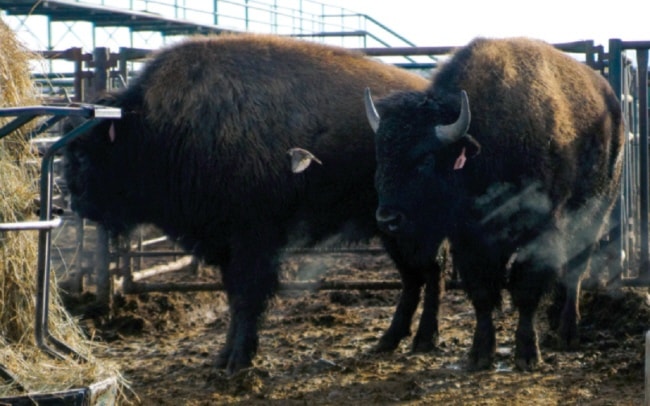Joel van der Veen
BLACK PRESS
Growing demand for bison meat has proven to be a boon for farmers in Alberta, according to an industry representative.
“I think we’ve got a pretty bright future all around,” said Linda Sautner, office manager of the Bison Producers of Alberta, based in Nisku.
Sautner, who was busily preparing for the Wildrose Bison Convention, held March 13 and 14 in Ponoka, said that while the bison industry here hasn’t reached the peaks of its late-‘90s heyday, there’s plenty of reasons to be optimistic.
Bison meat has developed a reputation as a healthy substitute for other meats, leading to what she called a “paradigm shift” and a growing demand for the product, as many heart and health experts have recommended it to patients.
“The meat is very nutritious,” she said, explaining that it is high in protein and iron, and low in fat and cholesterol compared to other types of red meat. “A serving can be smaller and still fill you up the way a larger serving of another kind of meat can.”
The re-opening of the U.S. border and the decreased value of the Canadian dollar has also helped expand the market for Alberta’s bison meat, and as a result, Sautner said, farmers are having a hard time keeping up with the demand.
“When something pays well, people look to it as an opportunity,” she said.
The Alberta organization has 127 member farms registered for 2015, but Sautner said she estimates there are about 200 bison farms in the province in total.
She added that many of these also have other operations in addition to raising bison, estimating that there are about 65,000 bison in the province altogether.
Commercial bison farming in Alberta reached its prime in the late 1990s, as an up-and-coming industry that seemed rife with opportunity.
“There was money in the oilfield and a lot of people were using it that way,” recalled Sautner.
However, the closing of the U.S. border in 2003 following the mad cow disease scare hit the industry hard, as the ban applied to all ruminants. This effectively cut off 75 per cent of the market.
“We could no longer send our animals or our meat across the border,” Sautner said. “A lot of people decided to get out of raising bison.”
The market has slowly built back up, especially in the last five years. Sautner said that while she doesn’t anticipate it reaching those peak levels again, today the prices are good and demand is high.
She said the “energy and excitement” in the industry is evident from the registration numbers for this year’s convention, with 125 registered for the Friday night banquet and 140 expected to attend their annual general meeting and other events on Saturday.
For more information, visit bisoncentre.com or call 780-955-1995.
